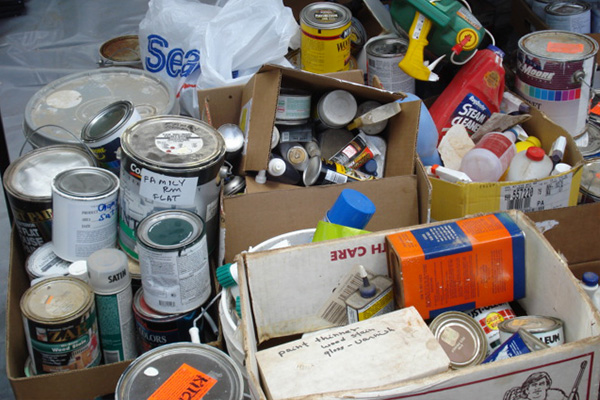Emerging Contaminants#
The Safe Drinking Water Act (SDWA) defines "contaminant" as any physical, chemical, biological or radiological substance or matter in water. Drinking water may reasonably be expected to contain at least small amounts of some contaminants. Some contaminants may be harmful if consumed at certain levels in drinking water. The presence of contaminants does not necessarily indicate that the water poses a health risk. Read more about types of drinking water contaminants from the EPA.
Emerging contaminants are trace concentrations (at the nanogram/L or part per trillion level, or less) of the following types of chemicals:
- personal care products (fragrances, sunscreens, insect repellents, detergents, household chemicals)
- pharmaceuticals (click here for safe disposal options)
- hormone-disrupting chemicals
- pesticides and herbicides
How You Can Help#

Household Hazardous Waste (HHW)
Incorrect disposal of HHW contributes to contaminant levels. Signal words on packaging may include poison, toxic, danger, warning and/or caution.

What Not To Flush
Remember, only flush the three Ps: pee, poo and toilet paper. All other items should be thrown in the trash (not the recycle bin).

Pharmaceuticals
Wastewater treatment plants are not designed to remove these chemicals and compounds, and they can pass through to local waterways and have harmful effects on animals, humans and the environment.
Per- and Polyfluoroalkyl Substances (PFAS)#
Per- and polyfluoroalkyl substances (PFAS) are a group of 1,000+ man-made chemicals that include PFOA, PFOS, GenX, and many other chemicals. PFAS can be found in water and there is evidence that exposure to PFAS can lead to adverse human health effects. At this time, PFAS have not been identified in either of the City’s source watersheds, but we will continue to monitor and stay up today on emerging regulations.
Northern Colorado Compounds of Emerging Concern Program#
Fort Collins Utilities monitors emerging contaminants in our source drinking water supplies as a member and funder in the Northern Colorado Compounds of Emerging Concern Program. This is a collaborative monitoring program initiated by Northern Water in 2009 that monitors more than 150 contaminants in source water supplies. Fort Collins Utilities' Source Watershed Program has been involved since inception and helps fund monitoring efforts, along with numerous other entities.
Study sites are mostly located within the Colorado-Big Thompson system, including Fort Collins' Horsetooth Reservoir and Poudre River drinking water supplies. Check out this infographic for more information.
Northern Water maintains posted reports for the program on its website.
Fourth Unregulated Contaminant Monitoring Rule (UCMR 4)#
Between April 2019-June 2020, Fort Collins Utilities participated in the U.S. Environmental Protection Agency’s (EPA) UCMR 4.
Approximately 6,000 utilities nationwide monitored unregulated contaminants for a year to help the EPA determine the occurrence of these contaminants in drinking water and whether they need to be regulated in the future.
Did You Know?
Installing high-efficiency refrigeration equipment at your business, such as zero-energy doors and anti-sweat heater controls (rebates available), can save money.
Pre-cooling your home before 2 p.m. during the summer and coasting through the on-peak hours can save money on your utility bill.
You can save water when washing fruits or vegetables by filling the sink with water instead of running the faucet.